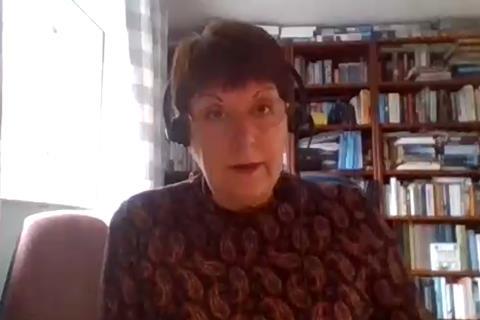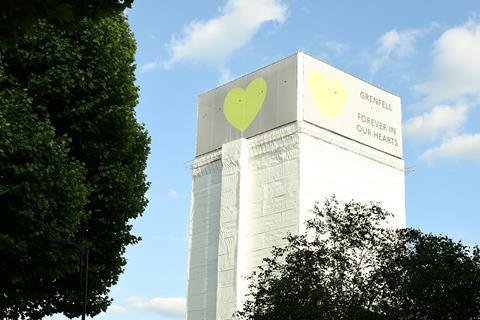Chair of safety steering group says department wants ‘resolution’ for those trapped in unsafe flats
The woman leading the formation of the new building safety regulator has predicted the government will make changes to its Building Safety Bill in order to help homeowners trapped in unsafe buildings.
Dame Judith Hackitt, who undertook the government’s review of fire safety rules for high-rise buildings in the wake of the Grenfell Tower disaster and is now chair of the industry safety steering group, said there was a need to put greater detail in the draft bill before it is brought before parliament early next year.

Hackitt said the problems faced by owners trapped in unsafe and unsellable high-rise flats was the “biggest risk” to implementation of the reform programme, and that she understood the housing ministry was now working to make changes to the bill to solve the issue.
The bill, designed to put into law the government’s reform programme created in response to the 2017 Grenfell tragedy, in which 72 people lost their lives, has been undergoing so-called “pre-legislative scrutiny” since it was published in draft form in July.
Hackitt (pictured speaking at Savills’ annual housing seminar) said the plight facing homeowners trapped in unsafe flats was “one of the biggest risks to implementing this change”, adding that around 13,000 existing buildings were likely to be bound by the new safety regime.
She said: “The need to find a resolution to that is quite clearly recognised within CLG [the housing ministry] and they know it needs to be addressed as part of putting greater detail into the Building Safety Bill before it goes back in to parliament.
“It was identified throughout the pre-legislative scrutiny process as one of the biggest issues, so there’s a lot of work going on, and I think we will see some further clarity and some resolution to that, before the bill is introduced into parliament. That’s my hope.”
Hackitt said the bill was on course to be formally laid before parliament in “early 2021” but she did not set out what changes she expected the housing ministry to make to address the issue.
The Building Safety Bill has been drafted to set up a new system of regulation designed to ensure new buildings do not suffer from the same failures which afflicted Grenfell Tower, but will also apply to existing high-risk residential buildings.
Hackitt said the plan was that the new regime will come in to place formally in 2023 but that developers and the construction industry should start implementing new practices now.
She also accused mortgage lenders and insurers of “overreacting” to the new building safety agenda by requiring leasehold owners in many blocks to secure an EWS1 form designed to demonstrate the fire safety of blocks, even when there was no fire risk.
She said: “Well-intentioned moves to help the process for external wall systems […] have resulted in over-use and indiscriminate use of EWS1 forms and, in some of the very worst of these cases, leasehold flats being considered unsellable and unmortgageable.
“We need to apply proportion and common sense to what we do now and going forward, and refrain from these blanket approaches which confuse hazard and risk.”

Her comments come after the ministry announced at the weekend that it was acting to prevent homes without cladding being drawn into problems experienced by homeowners since the introduction of the EWS1 form. This is designed to help an estimate 431,000 leaseholders potentially affected by the problems.
MPs have previously called on the department to devote more resources to repairing private sector blocks with flammable cladding, with the government insisting it should not shoulder costs which should by rights fall on builders and developers.
The government has allocated £1.6bn to help repair blocks with flammable cladding, but the latest figures show that 44% of buildings identified as having flammable ACM cladding still have the material in place, nearly three and a half years on from the Grenfell fire, in which 72 people died.
Hackitt also told the Savills seminar that the new building safety regulator will work to assist those in the industry who are trying to do their best to stick by the rules.
But she said the regulator will be “much tougher on those who seek to game the system, or otherwise duck out of their legal and moral responsibilities”.
She said the body was on course to announce the appointment of a chief inspector of building safety in early 2021.
















No comments yet